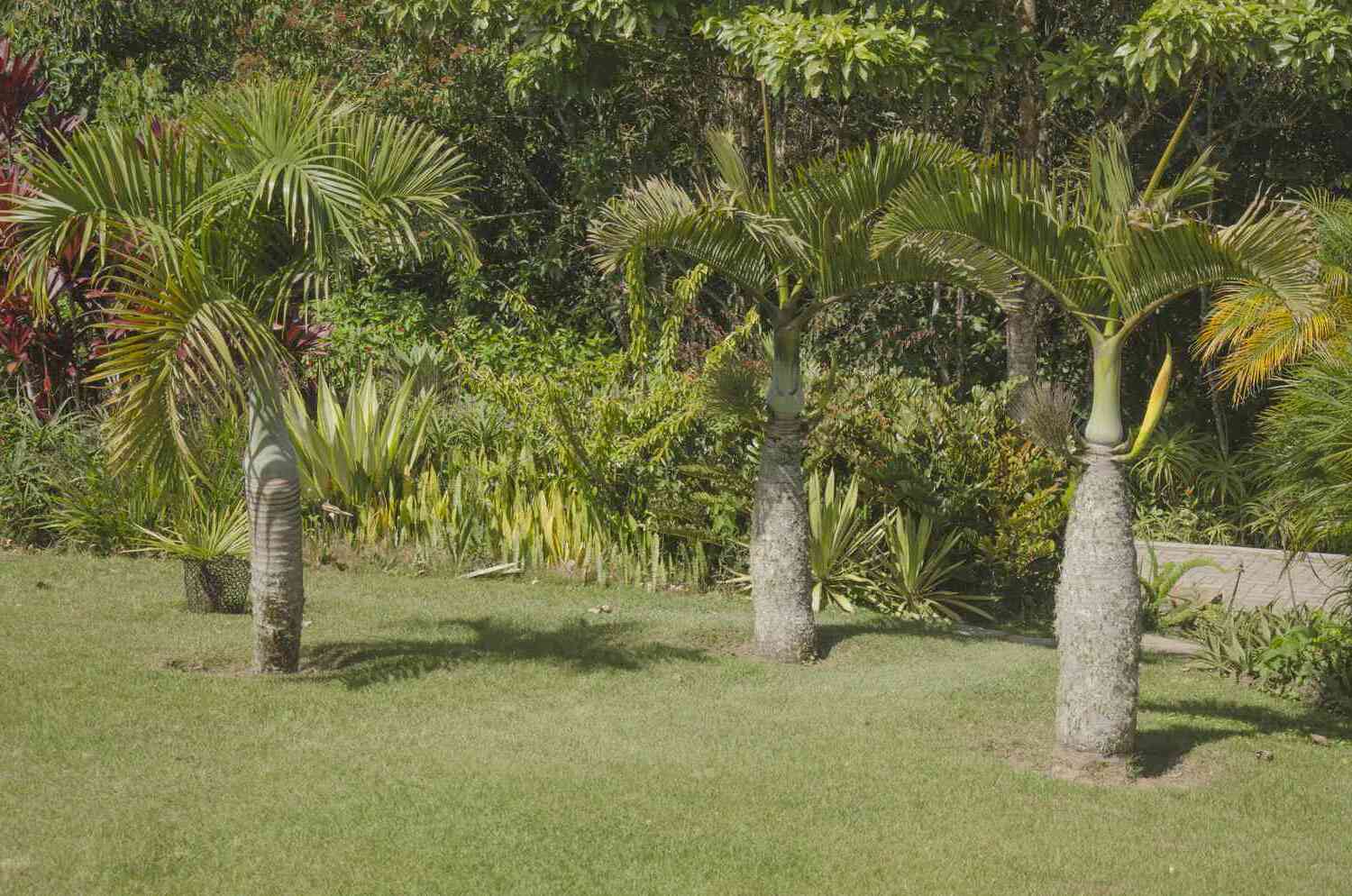
What makes the Bottle Palm so unique? This quirky tree, known for its bulbous trunk, stands out in any landscape. Native to the Mascarene Islands, it thrives in tropical climates. Its swollen base stores water, making it drought-resistant. The Bottle Palm's feathery fronds add a touch of the exotic to gardens. Despite its slow growth, it can reach up to 12 feet tall. This palm is not just a pretty face; it's also low-maintenance. Ideal for both novice and seasoned gardeners, it requires minimal care. Bottle Palms are perfect for coastal areas due to their salt tolerance. Ready to learn more? Let's dive into 27 fascinating facts about this remarkable tree.
What is a Bottle Palm?
The Bottle Palm (Hyophorbe lagenicaulis) is a unique and eye-catching plant known for its swollen trunk that resembles a bottle. Native to the Mascarene Islands, this palm is popular in tropical and subtropical gardens. Let's dive into some fascinating facts about this intriguing plant.
- The Bottle Palm is native to Round Island, near Mauritius in the Indian Ocean.
- Its scientific name, Hyophorbe lagenicaulis, comes from Greek words meaning "pig" and "fodder," as well as Latin for "bottle-shaped."
Unique Characteristics of Bottle Palm
Bottle Palms have several distinctive features that make them stand out. Here are some of the most notable ones:
- The trunk of the Bottle Palm swells at the base, giving it a bottle-like appearance.
- This palm can grow up to 10 feet tall, but it typically stays around 5-7 feet in height.
- The leaves are pinnate, meaning they have leaflets arranged on either side of a central stem.
- Bottle Palms produce small, white flowers that grow in clusters.
- The fruit of the Bottle Palm is a small, black drupe.
Growth and Care
Caring for a Bottle Palm requires some specific conditions to ensure it thrives. Here are some tips and facts about its growth:
- Bottle Palms prefer well-drained soil and can tolerate sandy or rocky conditions.
- They thrive in full sun but can also tolerate partial shade.
- These palms are drought-tolerant once established, but they do need regular watering during their initial growth period.
- Bottle Palms are sensitive to cold and should be protected from frost.
- They can be grown indoors in containers, provided they receive enough light.
Environmental Impact and Conservation
The Bottle Palm has an interesting relationship with its environment and faces some conservation challenges:
- Bottle Palms are considered endangered in their native habitat due to habitat loss and invasive species.
- They play a role in their ecosystem by providing food and shelter for various animals.
- Conservation efforts are underway to protect and restore Bottle Palm populations in the wild.
Uses and Cultural Significance
Bottle Palms are not just beautiful; they also have some practical and cultural uses:
- In landscaping, Bottle Palms are often used as ornamental plants due to their unique appearance.
- They are popular in tropical and subtropical gardens, as well as in indoor plant collections.
- In some cultures, Bottle Palms are considered symbols of resilience and strength due to their ability to withstand harsh conditions.
Interesting Tidbits
Here are some more fun and lesser-known facts about Bottle Palms:
- The swollen trunk of the Bottle Palm stores water, helping the plant survive in dry conditions.
- Bottle Palms grow very slowly, often taking several years to reach their full height.
- They are relatively low-maintenance, making them a popular choice for novice gardeners.
- The leaves of the Bottle Palm can grow up to 10 feet long.
- Bottle Palms are often used in bonsai due to their slow growth and unique appearance.
Challenges and Pests
Like all plants, Bottle Palms face some challenges from pests and diseases:
- Common pests that affect Bottle Palms include spider mites, scale insects, and mealybugs.
- Fungal infections can also be a problem, particularly in overly wet conditions.
- Proper care and maintenance, such as regular watering and pruning, can help prevent these issues.
Fun Facts
Let's wrap up with some final fun facts about Bottle Palms:
- The Bottle Palm is sometimes called the "Champagne Palm" due to its bubbly trunk shape.
The Final Word on Bottle Palm Facts
Bottle palms are fascinating plants with their unique bottle-shaped trunks and lush, feathery fronds. These tropical beauties thrive in warm climates and can add a touch of the exotic to any garden. They’re not just pretty faces; bottle palms are also quite resilient, tolerating drought and salty conditions. However, they do need protection from frost and cold winds.
Their slow growth rate means they won’t outgrow their space quickly, making them perfect for smaller gardens or as potted plants. Regular watering and occasional fertilizing will keep them healthy and vibrant. Remember, they’re susceptible to pests like spider mites and scale insects, so keep an eye out for any signs of trouble.
Incorporating bottle palms into your garden can provide a tropical flair and a conversation starter. With proper care, these palms will reward you with their striking appearance for years to come.
Was this page helpful?
Our commitment to delivering trustworthy and engaging content is at the heart of what we do. Each fact on our site is contributed by real users like you, bringing a wealth of diverse insights and information. To ensure the highest standards of accuracy and reliability, our dedicated editors meticulously review each submission. This process guarantees that the facts we share are not only fascinating but also credible. Trust in our commitment to quality and authenticity as you explore and learn with us.


